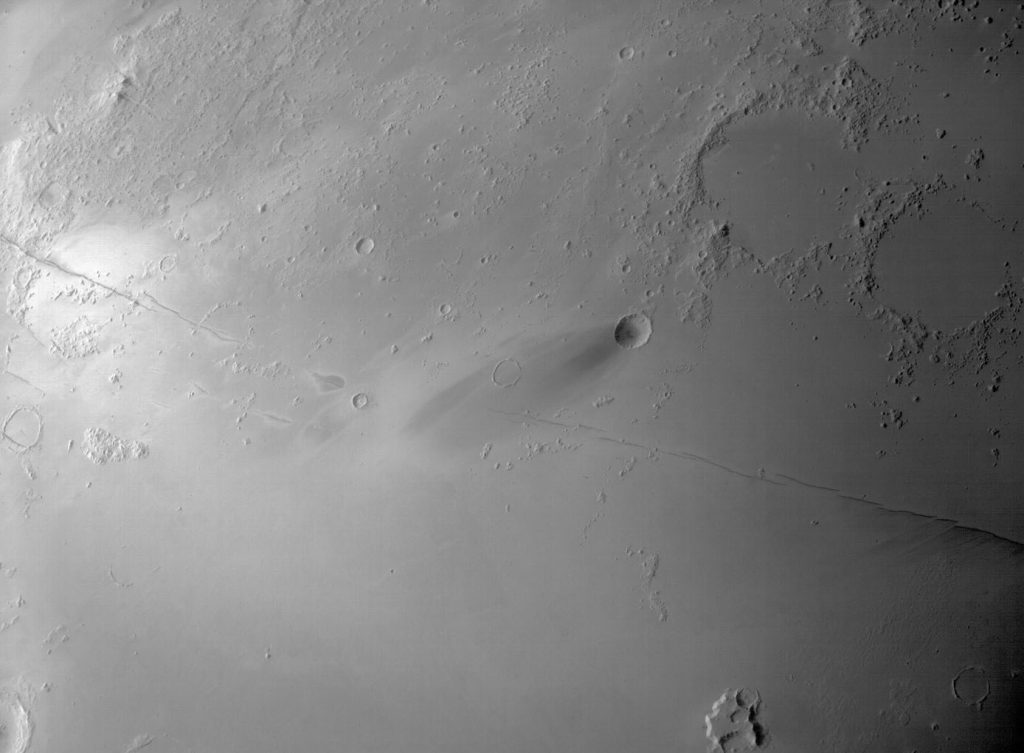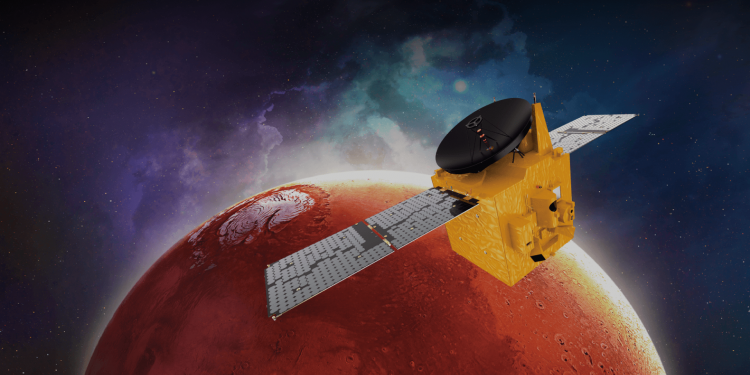The Emirates Mars Exploration Project “The Hope Probe” announced today the transition of the Hope Probe from the capture orbit to the scientific orbit, after the success of the first maneuver by operating the propulsion engines of the probe, which lasted for 8.56 minutes.
Thus, the probe is now in its final orbit around Mars in preparation for the start of its scientific mission, which will last for two years, and may require only slight direction of its path later.

Imran Sharaf, Director of the Emirates Mars Exploration Project, said: The move of the ‘Hope probe’ to the scientific orbit was very important, and I can say that it was the last critical moment for the mission due to the possibility of losing the probe during the maneuver … We are currently evaluating the results of that operation, but we are We are confident that we will not need another major orbit adjustment maneuver. “
The Al-Amal probe has moved from the capture orbit of 1063 km to 42,461 km to a scientific orbit of 20,000 km to 43,000 km, and this maneuver is the last dangerous operation for the use of propulsion engines during the journey of the Hope probe since its launch into space on July 20, 2020.
The scientific stage of the probe will begin on April 14 with a number of calibration and testing processes aimed at ensuring the safety of the three scientific devices and ensuring the accuracy of their scientific measurements, and the scientific mission of the probe, which will extend for a period of two years from collecting scientific data, will begin on May 23, 2021.
In turn, Hessa Al Matrooshi, Deputy Project Manager for Scientific Affairs said: “Once we are able to reach our stable scientific orbit and start using our scientific tools, we will start building data sets and testing our systems through live data, and that data that we will process, coordinate and share with the scientific and academic communities around the world. Openly through our website. “
The process of collecting scientific data about the red planet is a complex process that consists of making several “cycles” around Mars and determining each group of measurements to build an integrated picture of the movement of dust, ice and water vapor in the layers of the planet’s atmosphere. In addition, the probe will measure temperatures in the layers of the atmosphere and spread All of hydrogen gas, oxygen, carbon monoxide and ozone.
Hope’s unique elliptical orbit, at a 25-degree angle, enables high-resolution data and images of the planet’s atmosphere to be collected every 225 hours/9.5 days.
The Hope Probe carries 3 scientific devices: the Exploration Camera, which is a 12-megapixel digital camera that captures high-resolution images of Mars in addition to measuring water ice and ozone in the lower layer of the atmosphere through ultraviolet beams .. And the infrared spectrophotometer – combines the spectroscope Surface and atmospheric temperature information and measures the general distribution of dust, ice clouds and water vapor in the lower Martian atmosphere .. in addition to the UV spectrophotometer – measures oxygen and carbon monoxide in the atmosphere and the hydrogen and oxygen diversity in the upper atmosphere of the planet. the Red.
It is noteworthy that the engineers of the Mohammed bin Rashid Space Center have worked on the design and construction of the Hope Probe and its scientific equipment in cooperation with international knowledge partners, including the Laboratory of Atmospheric and Space Physics at the University of Colorado Boulder, Arizona State University and the University of California Berkeley.
The historic Al-Amal probe journey to the Red Planet coincides with the year of the UAE’s golden jubilee celebrations.




![The Top & Most Popular Seafood Bucket Restaurants in Dubai for you [Never Miss]](https://uae24x7.com/wp-content/uploads/2020/09/8-seafood-in-a-bucket-scaled-e1600739237403.jpg)
![Procedures for Renewing the Driving License in Abu Dhabi [3 Simple Steps]](https://uae24x7.com/wp-content/uploads/2020/07/Capture-9-e1595666454466.jpg)





